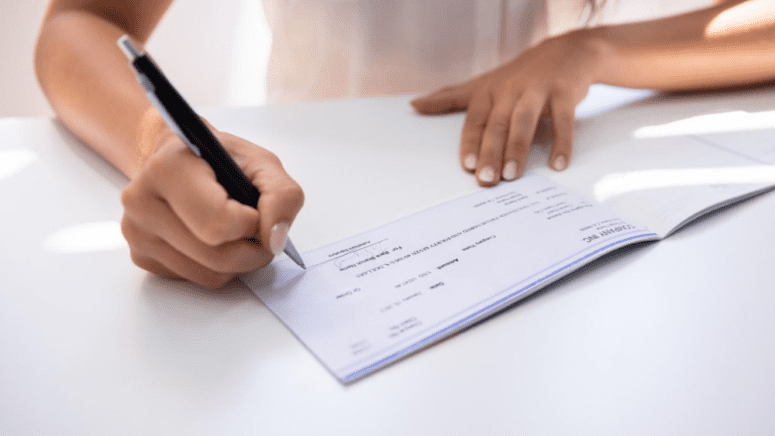What Is a Down Payment (And Why Is It Important)?
- Published on
- 3 min read
-
 Dena Landon, Contributing AuthorClose
Dena Landon, Contributing AuthorClose Dena Landon Contributing Author
Dena Landon Contributing AuthorDena Landon is a writer with over 10 years of experience and has had bylines appear in The Washington Post, Salon, Good Housekeeping and more. A homeowner and real estate investor herself, Dena's bought and sold four homes, worked in property management for other investors, and has written over 200 articles on real estate.
-
 Jedda Fernandez, Associate EditorClose
Jedda Fernandez, Associate EditorClose Jedda Fernandez Associate Editor
Jedda Fernandez Associate EditorJedda Fernandez is an associate editor for HomeLight's Resource Centers with more than five years of editorial experience in the real estate industry.
You’ve no doubt heard the phrase “no money down!” on a late-night infomercial — but what exactly does that mean? It means that you’ll finance 100% of the purchase price of the item in question, without paying any of your money upfront to own it. While this is an option at some car dealerships, it’s rarely an option with a house.
For first-time homebuyers especially, understanding the down payment can be a big hurdle to clear before you can buy a house. Someone may have told you that you must have 20% of the home’s purchase price, and that amount looks ridiculously large. You have no idea how you’ll save up that much money, and you wonder if you have other options.
There are many misconceptions out there about homebuying related to two simple questions — what is a down payment? And how much money do I need to buy a house?
What is a down payment?
If you’re borrowing a large sum of money to purchase something, it’s common for lenders to ask for a down payment. A down payment is money that you pay toward the larger purchase price, and then the rest of the purchase is financed. If you’ve bought a car or a major appliance, you probably had to put down money before they would approve your loan.
Vince Grant, an agent in Everett, Washington, with 35 years of experience, says that lenders want to see a down payment because “the more skin in the game the borrower has, the less risk of default the lender has.” Along with your credit score, it tells the lender that you know how to save and manage money, which decreases your risk of default.
A down payment is usually expressed as a percentage: 3%, 10%, or 20% of the total purchase price, for example. You must have this money available to pay upfront, and then the lender will loan you the remaining balance owed on the house.
How do down payments work with real estate transactions?
Most people don’t have hundreds of thousands of dollars available to buy a house — they need to get a mortgage loan. Mortgage lenders often require that you contribute cash out of your pocket — the down payment — to the home’s purchase price, and then they extend a mortgage for the remainder.
There’s a common belief out there that you need to save 20% of the home’s purchase price to buy, but that’s just not true. With some programs, you can pay much less. But should you?
Grant definitely doesn’t think that homebuyers should wait until they have 20% down to buy. “The reason why,” he explains, “is in most markets across the country, the market is going to appreciate way faster than you can accumulate your down payment.” If you’re trying to save 20% and home prices are going up, the amount you need to save is constantly rising, and you’ll never get there.
There are several types of mortgage loans that have different down payment requirements. Nicole Rosandich Meeker is the Vice President of Mortgage Lending at CrossCountry Mortgage. “The 20% down payment is set in stone if you are trying to avoid mortgage insurance, but there are programs where you can put as little as 3% down,” she explains. Government and state-sponsored loans help first-time homeowners get into a house with less money down.
If you qualify for a VA loan, you can put down 0% — but you have to be an eligible veteran, service member, or a select military spouse. Qualified homebuyers can also take advantage of a USDA loan and put 0%, but their property must be in a rural area per the USDA’s map.
You can take out a Federal Housing Administration, or FHA, loan if you have 3.0% or 3.5% down and meet other eligibility requirements. Almost every state has first-time or low-income housing programs designed to help some families obtain homeownership. In Meeker’s state, Minnesota, “We have the Minnesota Housing Finance Agency (MHFA). Their program allows someone to get into a home for as little as $1,000.”
Before you rule out homeownership, you should talk to a licensed loan officer and agent in your area. They will know about programs specific to your state.
If you have the option of putting down a small down payment, Meeker advises trying to increase the amount as much as you can. With more money down, you’ll pay less in interest over the loan’s lifetime, and your monthly payments will also be lower. But “the biggest difference you’ll see is in the mortgage insurance,” she says. “The more money you put down, the cheaper it gets.”
That’s right — as great as these programs are, they do have a drawback.
What is mortgage insurance?
If you put down less than 20% on a house, you’ll have to pay for mortgage insurance of some sort (MI). This insurance protects the lender’s investment but provides no value to you, beyond getting your foot in the door of homeownership. The amount you’ll pay is calculated based on the loan amount and home’s value. Therefore, if you have a larger down payment, your loan amount drops, and so does your MI payment.
The possibility of paying MI shouldn’t scare you away from buying a home. While MI could be a couple of hundred dollars a month, it can still be better than renting. If you’re currently renting, your payment isn’t working toward your home equity at all, and you’re not getting any of the upside of an appreciating market.
Grant gives the example of buying a $300,000 house with a conventional loan and private mortgage insurance (PMI). Over a year, it appreciates 5% and gains $15,000 in equity. Meanwhile you’ve paid $2,400 in mortgage insurance over that year, and so your net gain is still $11,000.
As the equity in your home builds, you’ll eventually be able to get out of paying mortgage insurance; most lenders cancel PMI after you’ve reached 20% equity in your home with a conventional loan. For FHA loans, your MI payment may last for the life of the loan if your down payment was less than 10%, or may be removed after 11 years if you made a down payment of 10% or more. But once you establish at least 20% in equity in your home, refinancing is a great option to eliminate that additional MI payment.
How can I avoid paying MI?
If you want to avoid MI from the beginning of owning a home, you’ll need to put at least 20% down on the home. Depending on the market and the price of your home in your area, this can be a significant amount.
If you’re buying a house for $250,000, for example, a 3% down payment would be $7,500, 10% would be $25,000, and 20% would be $50,000. In each respective case, you’d have a mortgage for $242,500, $225,000, or $200,000, representing the remaining principal.
As you can see, there’s a significant difference between 3% and 20%, which also impacts the amount borrowed. The lender has greater risk with a down payment under 20%; thus, they require MI.
The actual down payment money
When you get preapproved for a mortgage before you start shopping for houses, you’ll have to show proof that you have the down payment funds available for the loan. Lenders may ask for proof of where those funds came from — was it a gift from a parent? Savings from your income?
The reason they want details is, again, because they need to understand the source of the payment as it can impact how the loan is underwritten. They are lending you a significant amount of capital, and they need to understand your repayment ability.
Don’t get used to holding onto that money, though. Immediately after making an offer on a house, you’ll likely have to give some of it to the seller as an earnest money deposit, which will be put in escrow until the sale closes. Earnest money reassures the seller that you’re serious about buying their house.
A larger amount of earnest money increases the likelihood that they’ll accept your offer. Be careful, though, about how your agent writes the offer contract. If you don’t reach the closing table, the seller might be able to keep your earnest money.
Sending the funds for the down payment
You don’t simply whip out your checkbook and write a check to buy a house. Down payment funds are almost always transferred using a cashier’s check, though some title companies use a wire transfer.
Be sure to carefully follow your agent’s instructions — fraud happens, and you could lose your entire down payment if you send your money to the wrong account. Your agent should provide you with any wire transfer information, and if you receive any requests to reroute funds, contact your agent via phone immediately.
It may take a few months or years of disciplined saving to set aside those funds, but one day, you’ll turn that money in your bank account into a key in your hand.
Header Image Source: (Andrey_Popov / Shutterstock)



